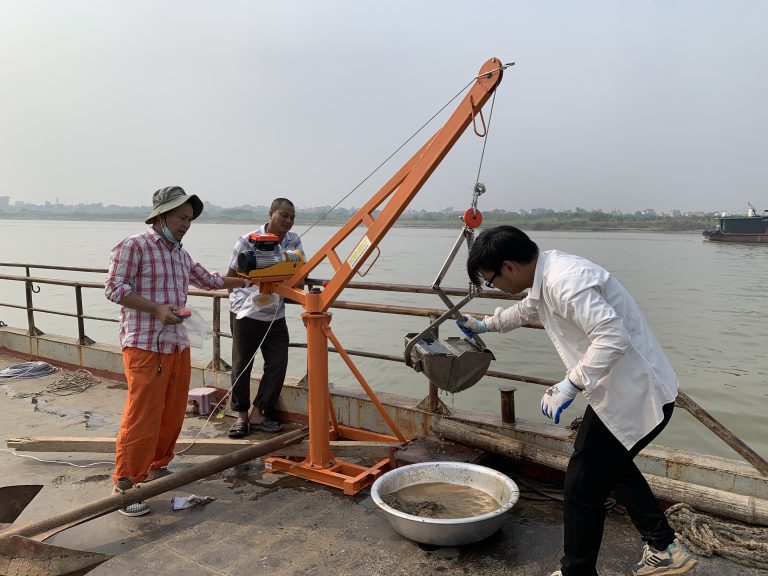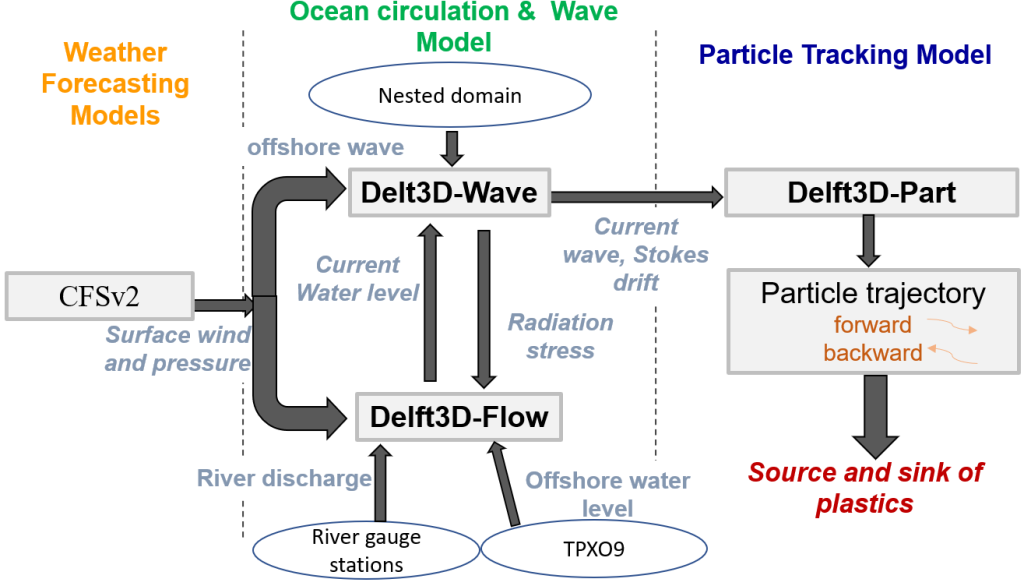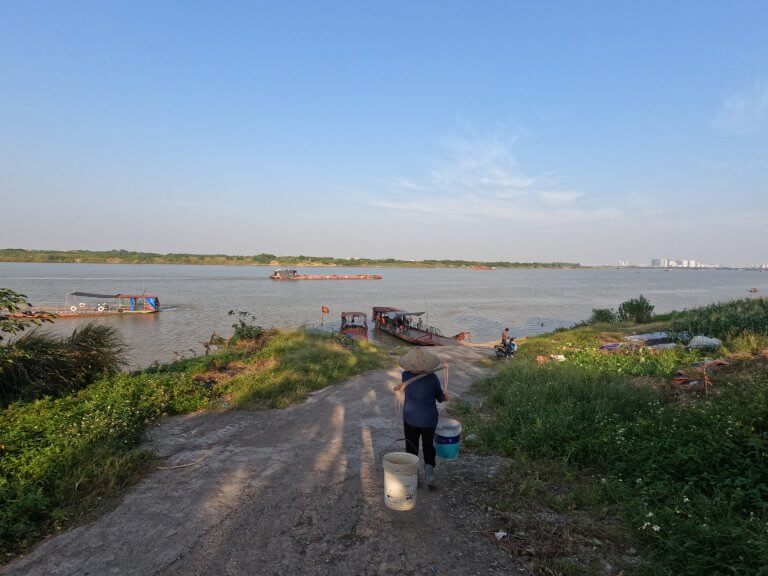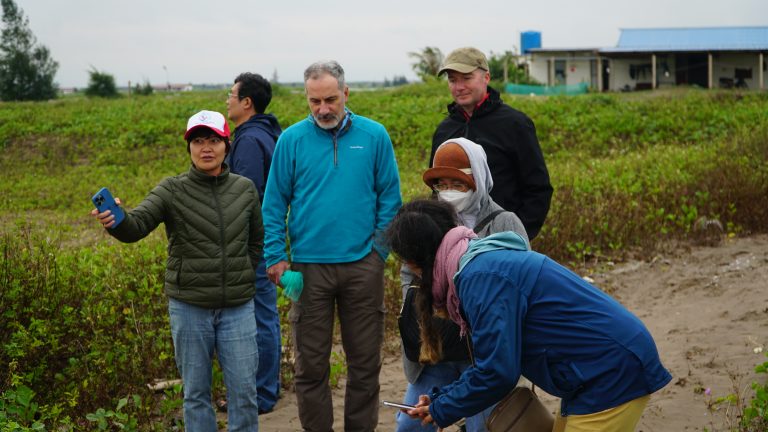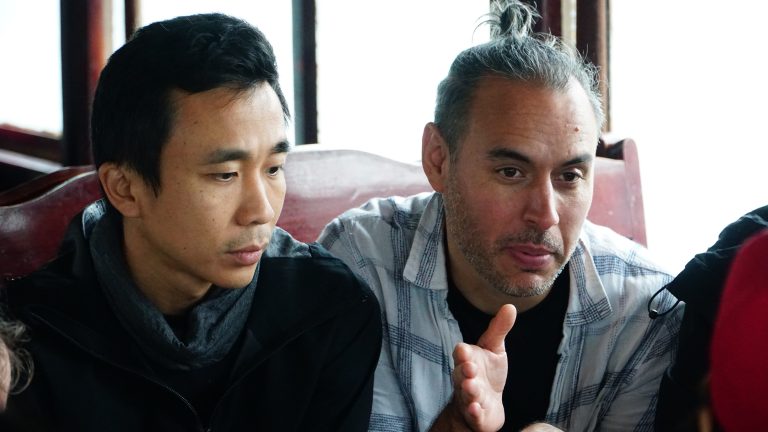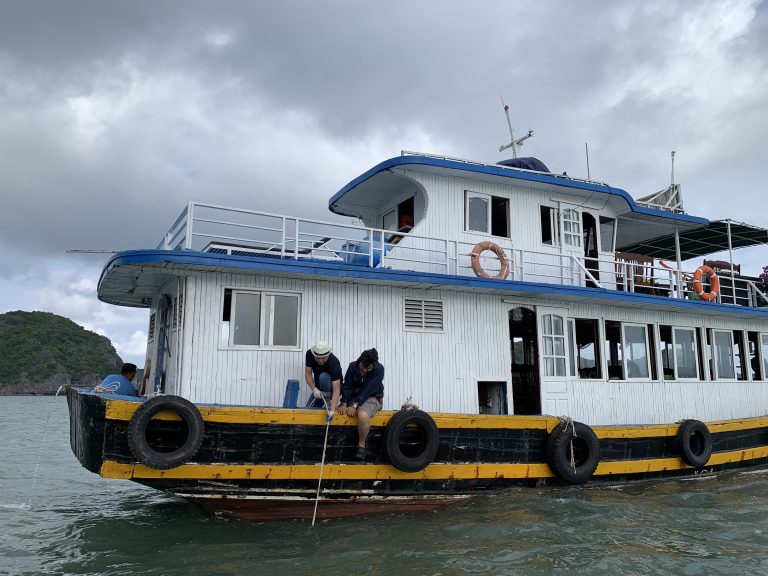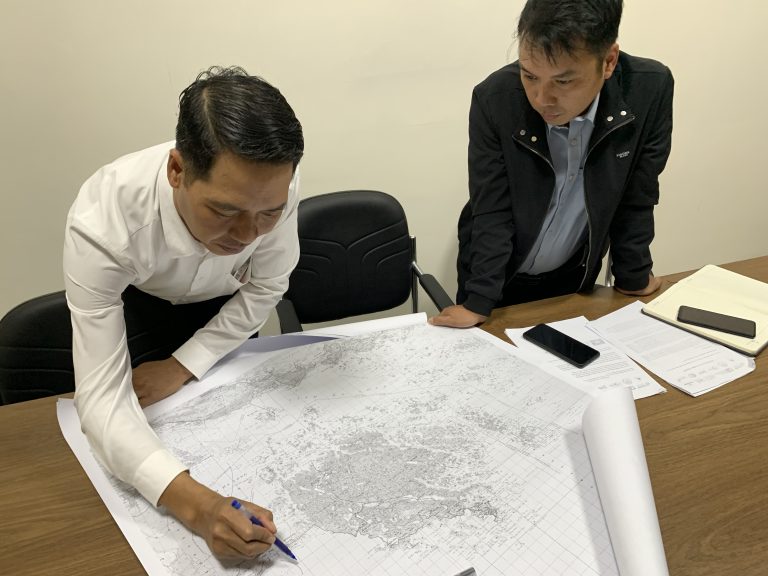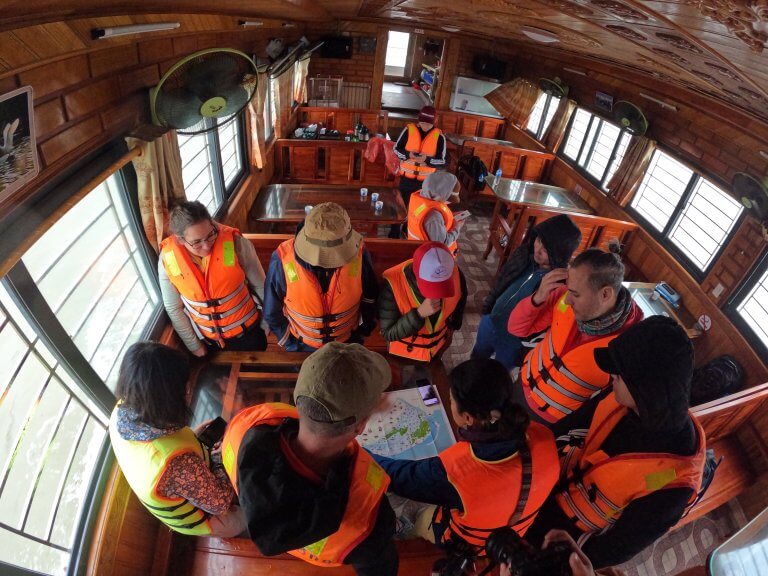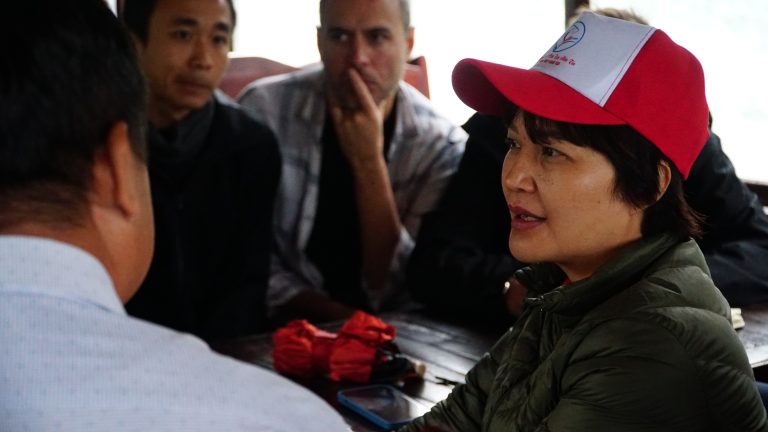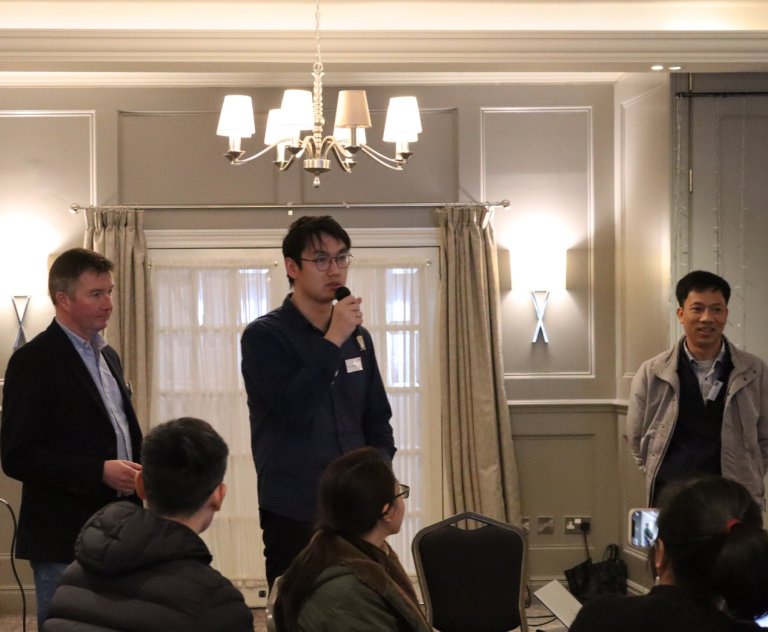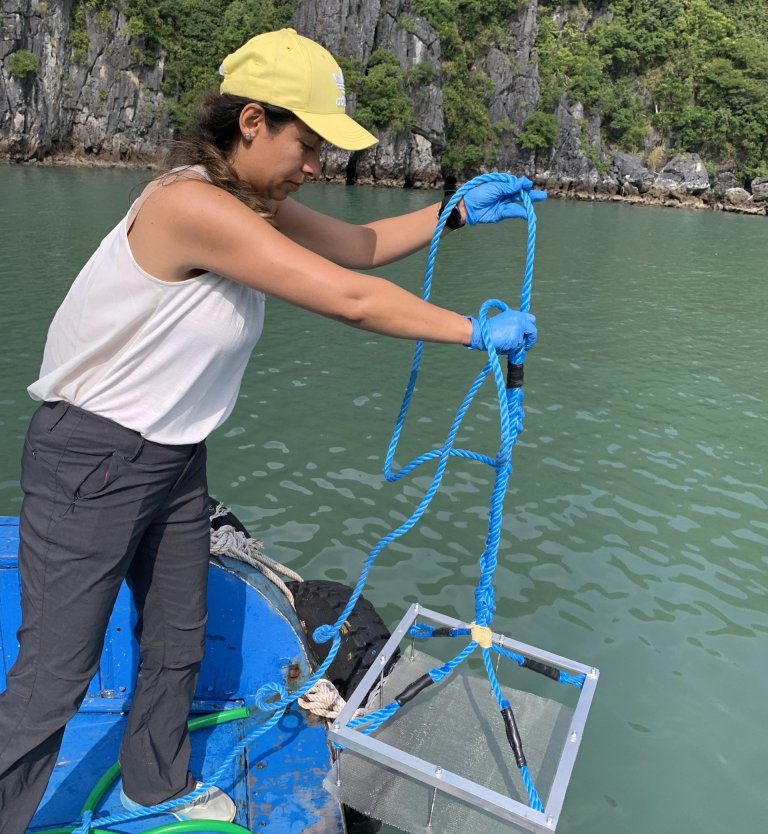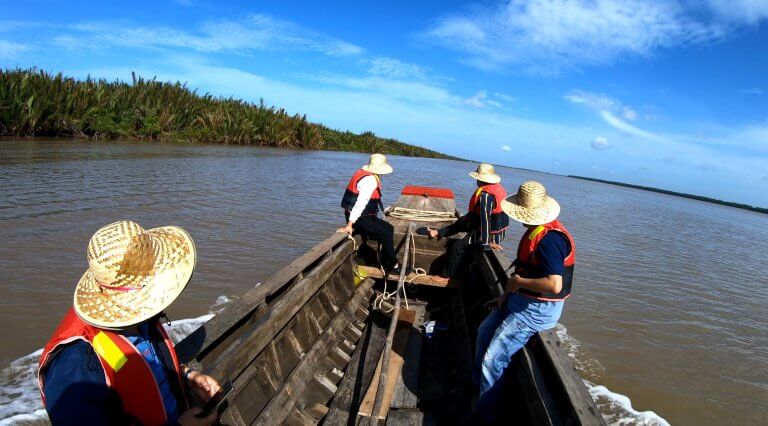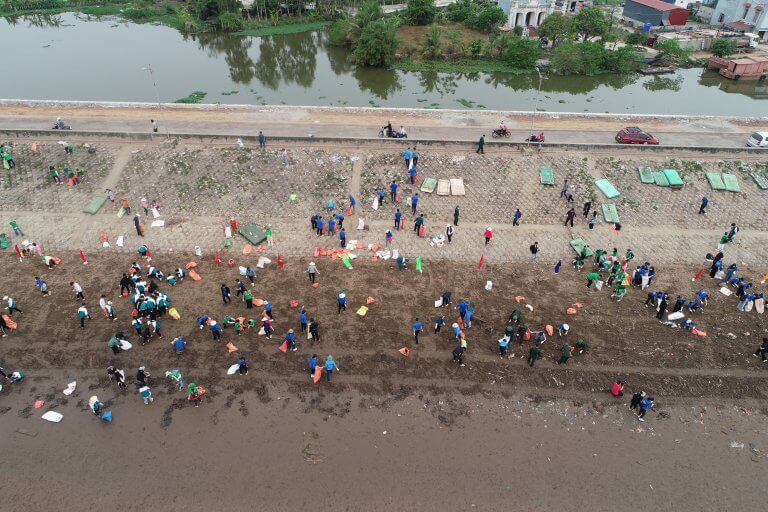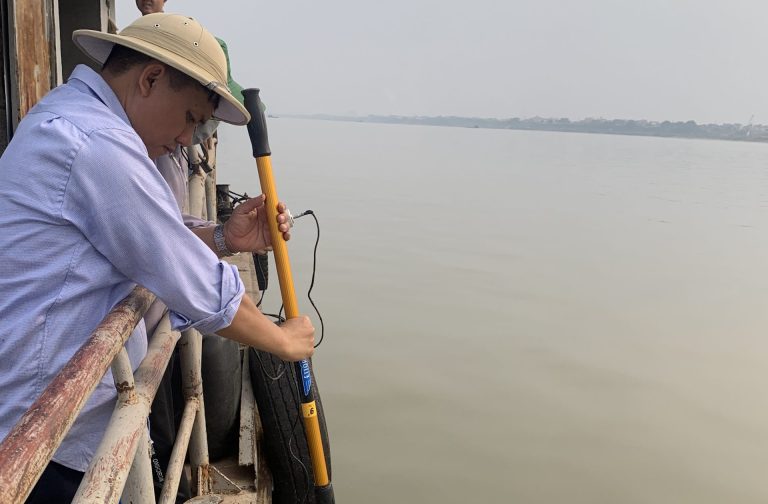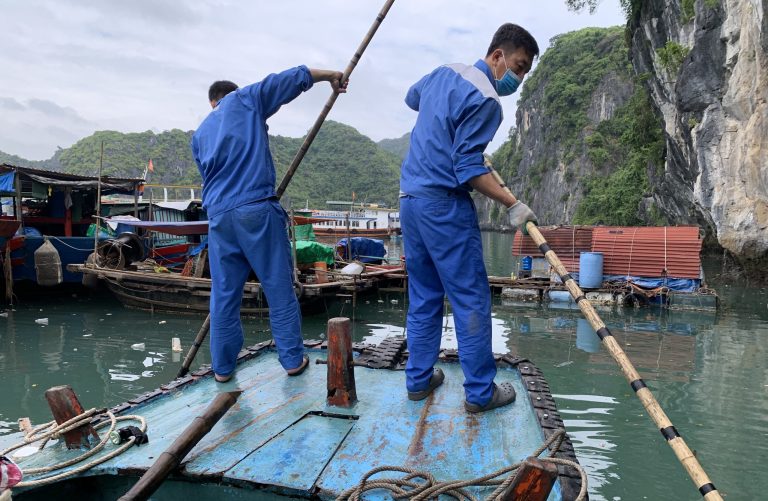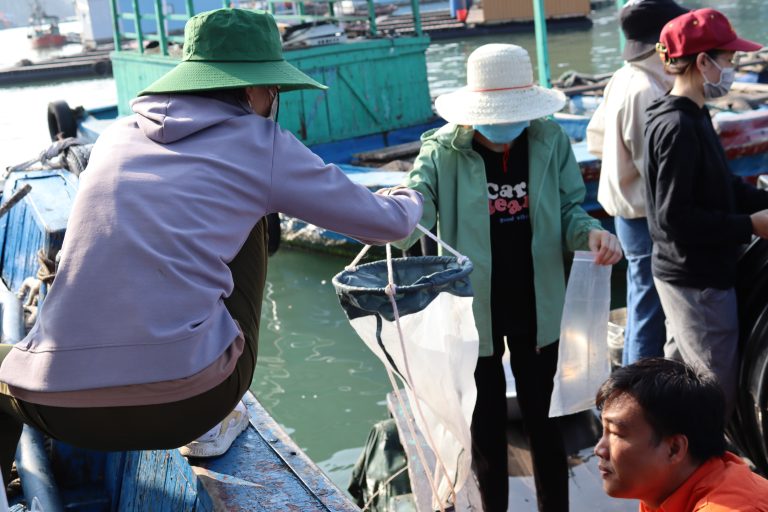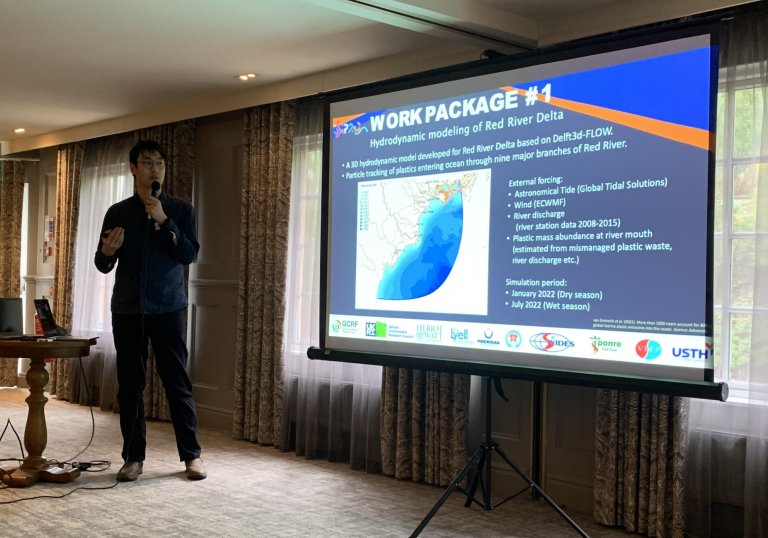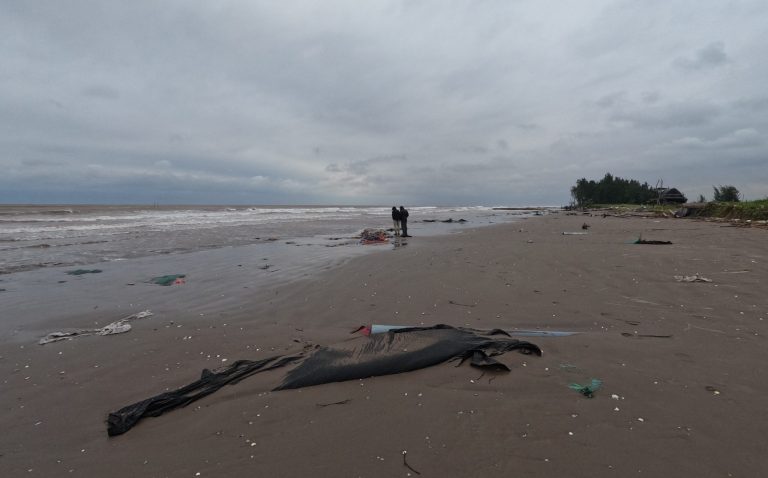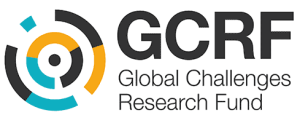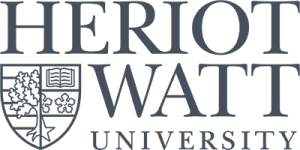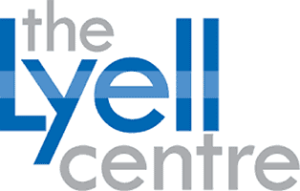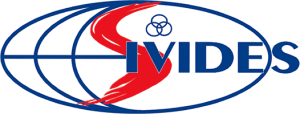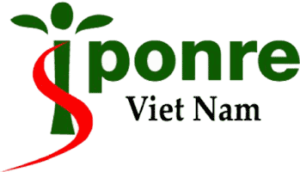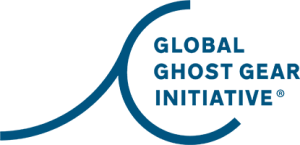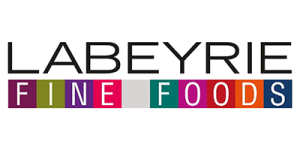One of the main objectives of this workpage is to investigate how microplastics (0.3 – 5.0 mm) move in the aquatic environment. To do this, our group explores microplastics’ pathways from major sources to sinks in coastal Viet Nam. Our field sampling campaign takes place along the branches of the Red River and the Mekong River, and around Cat Ba Island.
We know that the plastics discharged into the rivers and ocean are a complex mixture of particles of various polymer types, sizes, shapes, ages, and densities. We also know that their impact on the environment and human health also depends on these characteristics. Hence, to understand their negative effects and to come up with effective solutions, we first collect plastic samples from water, sediment, and aquatic organisms. We analyse these plastic particles in the laboratory to measure their physical and biochemical properties. We also examine for other contaminants such as persistent organic pollutants (POPs), heavy metals, and pathogens.
Based on the characteristics of plastics and the knowledge of the ocean current and waves, we are developing a model to investigate how plastics travel along the river, into the marine environment, and eventually where they are likely to accumulate along the coast or be transported to a distant region.
